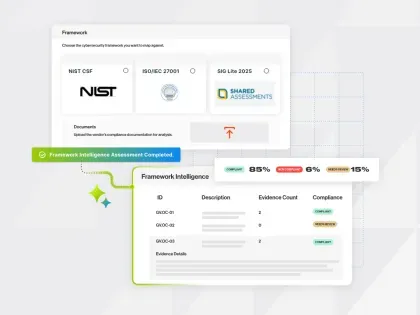4 Things to Know About FISMA

Recently, we discussed the most effective cybersecurity frameworks to reduce the risk of cyber threats. One of the most important systems is the Federal Information Security Management Act (FISMA). This act applies to certain organizations, and is imperative to help protect them against data breaches.
Let’s take a look at four things to know about FISMA, from what it is to how to monitor FISMA compliance.
What Is FISMA?
FISMA applies to all federal agencies and their vendors, and is important because it helps protect valuable government information. To ensure compliance, agencies need to identify and implement security controls, create security plans, and conduct regular security risk assessments. They also need to track and monitor their progress in implementing the controls, and use the results of their risk assessments to update their plans as needed. Finally, agencies must continuously monitor their systems for any suspicious activity and take corrective action if needed.
FISMA compliance requires agencies to create and maintain a formal incident response plan in order to effectively respond to and report any security incidents. This plan should include detailed steps for how to respond to any security incidents that may occur, as well as protocols for reporting them to the relevant authorities. Relevant authorities can include The Department of Homeland Security, US-CERT, and The Inspector General among others.
This plan should also outline the roles and responsibilities of each individual within the organization in the event of a security incident, as well as the actions to be taken to investigate and mitigate any potential cybersecurity risks. The plan should include a timeline for responding to the incident. It should also provide guidance on how to communicate the incident to the public and media if necessary.
Additionally, agencies should ensure that their employees are properly trained in cyber security and information security policies and procedures. Agencies should strive to stay up-to-date on the latest cyber security best practices and technologies. By implementing these measures, agencies can ensure that they are meeting their FISMA compliance requirements.
What Does FISMA Mean For You?
If you’re a federal security manager, the Federal Information Security Management Act (FISMA) requires you to have a comprehensive and up-to-date view of your own networks and those of your vendors.
This means that any third parties you are using must also adhere to the security requirements set out by FISMA in order to remain compliant. This includes ensuring that the networks of your vendors are routinely monitored and that any security vulnerabilities are addressed in a timely manner. Additionally, you must have a plan in place for responding quickly to any security breaches that may occur.
It is crucial to make sure not only third parties, but also those beyond that, such as fourth and nth parties, are secure. This may be difficult, as smaller vendors may not possess the capability or knowledge to consistently monitor their security. The further down the chain of suppliers one goes, the more difficult it is to guarantee that all elements of the chain are upholding the right security protocols.
How Can You Monitor FISMA Compliance?
Traditional third-party cyber risk assessment practices, while helpful, are often time consuming and inadequate because they only provide a brief snapshot of a vendor’s security posture. And as recent third-party cyberattacks like SolarWinds ORION prove, periodic assessments are not enough. Only continuous and automated monitoring -- which FISMA calls for -- is sufficient to ensure that third-party vendors are always in compliance with FISMA standards.
Monitoring fourth parties is even more challenging, as it requires a deep dive into subcontractors and other providers you may not even know are part of your supply chain. Many of these organizations may be smaller companies -- some consisting of only a few employees -- that may not have the means to create strong security programs of their own. This makes them particularly vulnerable, and understanding the connections between them and your third-party vendors even more important.
Can Security Ratings Support Compliance?
Security ratings provide a measurable metric to determine third- and fourth-party risk. A security rating gives clear insight into your vendors’ cybersecurity postures, and offers CISOs and other members of the executive team an easily interpretable gauge of risk levels. The higher the rating, the lower the risk. A low vendor score may indicate heightened risk while presenting an opportunity to have an honest conversation with the vendor about the need to enhance their security measures.
Security ratings are an important tool for agencies to satisfy one of the core requirements of the Federal Information Security Management Act (FISMA). Security ratings are derived from ongoing monitoring of agencies and their vendor partners. This continuous monitoring allows agencies to be proactive in their FISMA compliance by quickly identifying and addressing any potential issues that arise and ensuring that FISMA requirements are continually met and that agency and vendor data remains secure.
Learn more about third party risk management
Our ebook is the perfect resource for anyone looking to make their vendor lifecycle management more efficient without compromising on security. Inside, you'll find invaluable information that can help you mitigate third-party risk, strengthen your FISMA cybersecurity compliance framework, save time, and save on resources. Download it now to get started and discover new ways to secure your vendor relationships.


